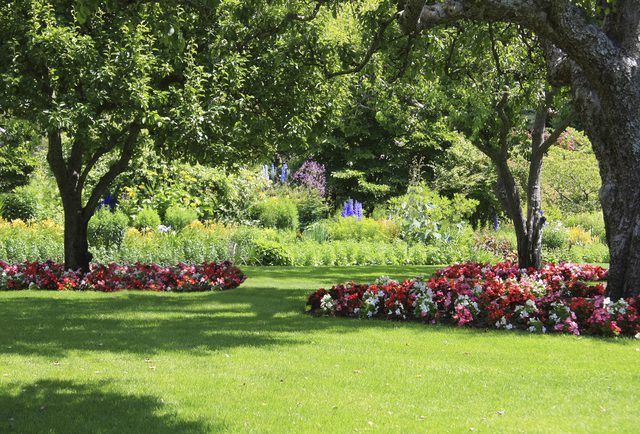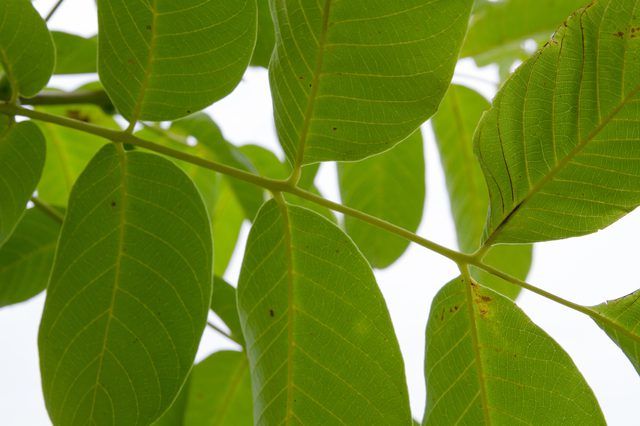Bulbs
Flower Basics
Flower Beds & Specialty Gardens
Flower Garden
Garden Furniture
Garden Gnomes
Garden Seeds
Garden Sheds
Garden Statues
Garden Tools & Supplies
Gardening Basics
Green & Organic
Groundcovers & Vines
Growing Annuals
Growing Basil
Growing Beans
Growing Berries
Growing Blueberries
Growing Cactus
Growing Corn
Growing Cotton
Growing Edibles
Growing Flowers
Growing Garlic
Growing Grapes
Growing Grass
Growing Herbs
Growing Jasmine
Growing Mint
Growing Mushrooms
Orchids
Growing Peanuts
Growing Perennials
Growing Plants
Growing Rosemary
Growing Roses
Growing Strawberries
Growing Sunflowers
Growing Thyme
Growing Tomatoes
Growing Tulips
Growing Vegetables
Herb Basics
Herb Garden
Indoor Growing
Landscaping Basics
Landscaping Patios
Landscaping Plants
Landscaping Shrubs
Landscaping Trees
Landscaping Walks & Pathways
Lawn Basics
Lawn Maintenance
Lawn Mowers
Lawn Ornaments
Lawn Planting
Lawn Tools
Outdoor Growing
Overall Landscape Planning
Pests, Weeds & Problems
Plant Basics
Rock Garden
Rose Garden
Shrubs
Soil
Specialty Gardens
Trees
Vegetable Garden
Yard Maintenance
How to Create Flowerbeds Around Trees
Grow shade- and drought-tolerant flowering plants around trees, and avoid disturbing the tree roots when creating the flowerbeds.
Creating flowerbeds in empty or weedy ground around trees can seem like an efficient use of space, but establishing beds that are successful over the long term is challenging. As well as shading the plants below them, trees have roots that grow close to the soil surface and compete with those plants for water and nutrients. Other problems flowering plants under trees may face are growth-inhibiting chemicals produced by certain trees that are allelopathic.
For healthy trees and flowering plants, avoid damaging tree roots, and grow flowering plants that tolerate the challenging conditions.

Allelopathic Trees
Allelopathic trees produce chemicals that cause wilting and death in other plants.

Walnut trees (Juglans spp.) and hickory trees (Carya spp.), for example, produce the chemical juglone, which passes into the soil from the trees' roots and from their leaves and nut hulls that fall to the ground. When juglone-sensitive plants absorb juglone, they turn yellow and wilt as if they're suffering from drought.
Early in the growing season, watering can revive the juglone-affected plants, but water has no effect later, and the plants turn brown and die. The juglone amount in soil is highest beneath a juglone-producing tree's leaf canopy. Growing flowering plants that are resistant to juglone and maintaining freely draining, aerated soil helps reduce juglone's effects.
Walnut trees include the black walnut (Juglans nigra), which is hardy in U.S. Department of Agriculture plant hardiness zones 4 through 9, and among the hickories is laney’s hickory (Carya x laneyi, USDA zones 4 through 8). Other allelopathic trees include sugar maple (Acer saccharum, USDA zones 3 through 8), red oak (Quercus rubra, USDA zones 4 through 8) and sassafras (Sassafras albidum, USDA zones 4 through 9).
Flowering Plants and Mulches
Tree roots are sensitive to disturbance. With careful planting and mulching, however, you can avoid damaging them excessively. Don't plant annual flowering plants underneath trees. Annual plants last only one growing season, and tree roots would be disturbed every year when new annual plants are added. Instead, grow perennial flowering plants, which return every year. Select perennials in 2 1/2- to 4 1/2-inch-diameter pots so the plants will fit between tree roots, avoiding the need to cut tree roots to create planting space.
Tip
Grow shade- and drought-tolerant plants in flowerbeds under trees.
Mulch on the soil surface conserves soil moisture and reduces weeds, helping plants become established, but thick mulches and raised beds reduce the air in the soil that tree roots need to survive. Don't make mulch layers more than 1 to 2 inches thick, and don't create raised beds around trees.
Flowering Plants for Around Trees
Three, five or other odd numbers of flowering plants look natural around trees. Place tall plants closest to the tree trunks and low-growing plants at the flowerbeds' edges. Plant medium-size plants in the spaces between tall and short plants. Many varieties of tall, medium-size and short plants can grow under trees.
Tall Plants
Mrs. Robb's bonnet (Euphorbia amygdaloides var. robbiae, USDA zones 6 through 9) offers yellow-green, flowerlike bracts from mid-spring through early summer. This perennial is evergreen and grows 1 to 3 feet tall and 3 to 6 feet wide.
Warning
Mrs. Robb's bonnet is invasive, and its sap irritates skin and, if eaten, digestive upset. Remove its faded flowers to help stop its invasive spread, and wear gloves when pulling up unwanted plants.
Chinese astilbe 'Superba' (Astilbe chinensis var. taquetii 'Superba,' USDA zones 4 through 8 ) features spikes of tiny, densely packed, deep-lilac blooms in summer. It grows 2 to 4 feet tall and 1 1/2 to 2 feet wide.
Medium-Size Plants
Bishop's hat (Epimedium x cantabrigiense, USDA zones 4 through 9) grows 1 to 2 feet tall and 2 to 3 feet wide. In spring, pink-tinged, yellow flowers 1/2 inch wide appear on stalks that rise above its new, copper-tinted leaves. In summer, the leaves mature to medium green, and they develop bronze tints in fall.
White wood aster (Eurybia divaricata, USDA zones 3 through 8) offers plentiful flat clusters of daisylike, white, 1-inch-wide flowers in fall. It grows 1 to 2 1/2 feet tall and 1 1/2 to 2 1/2 feet wide.
Short Plants
Phlox 'Chattahoochee' (Phlox divaricata subsp. laphamii 'Chattahoochee,' USDA zones 3 through 8) bears tubular, pale-lavender flowers with maroon throats in spring. Also providing glossy, dark-green leaves, 'Chattahoochee' grows 9 to 12 inches tall and 6 to 12 inches wide.
Chinese celandine poppy (Stylophorum lasiocarpum, USDA zones 4 through 9) features bright-yellow, 1 1/2-inch-wide flowers from late spring through late summer, followed by silver-haired seed capsules. This plant grows 12 to 18 inches tall and wide.
Flowerbed Formation
Things You'll Need
Trowel
Tape measure
Rake
Shade- and drought-tolerant, perennial, flowering plants
Garden hose with fine-spray attachment
Garden compost, leaf mold or other organic mulch
Tablespoon not used for food
Water-soluble, 24-8-16, foliar fertilizer
1-gallon container
Sprayer
Step 1
Dig up grass and weeds around the trees where you want to install flowerbeds. Use a trowel for digging, but avoid cutting through tree roots thicker than 2 inches. Pull up grass and weeds growing near tree roots that size. Rake plant debris left on the soil surface, and remove it from the area.
Step 2
Dig planting holes just large enough to fit the roots of the shade- and drought-tolerant, perennial, flowering plants you want to install. Ensure the planting holes are at least 1 foot from the tree trunks.
Tip
Space the planting holes according to the flowering plants' expected mature widths. If, for example, some plants will grow 18 inches wide, then space their planting holes far enough apart so that the plants' central stems will be at least 18 inches from each other.
Step 3
Remove the flowering plants from their nursery containers, and gently loosen their roots. Plant the perennials at the same soil depths at which they grew in their nursery containers, placing one plant in each hole. Fill gaps around the plants' roots with the soil you removed to create the holes, and use your fingertips to firm soil gently around the plants.
Step 4
Water the flowering plants' soil using a garden hose fitted with a fine-spray attachment. Apply enough water to moisten the soil to a depth of 12 inches.
Step 5
Spread a layer of garden compost, leaf mold or other organic mulch 1 to 2 inches thick on the soil surface around the plants and no closer than 1 foot from the tree trunks. Don't allow the mulch to touch the plants or the tree trunks.
Step 6
Water the flowerbeds when the soil surface beneath the mulch is dry. Water the plants at their bases, not over the entire root areas of the trees.
Step 7
Fertilize the flowering plants with a foliar fertilizer, which is applied to plant leaves. Dilute 1 tablespoon of a water-soluble 24-8-16 fertilizer in 1 gallon of water, and spray the solution on the flowering plants' leaves every seven to 14 days while the plants grow. One gallon of the solution should be enough for 10 square feet of plants.